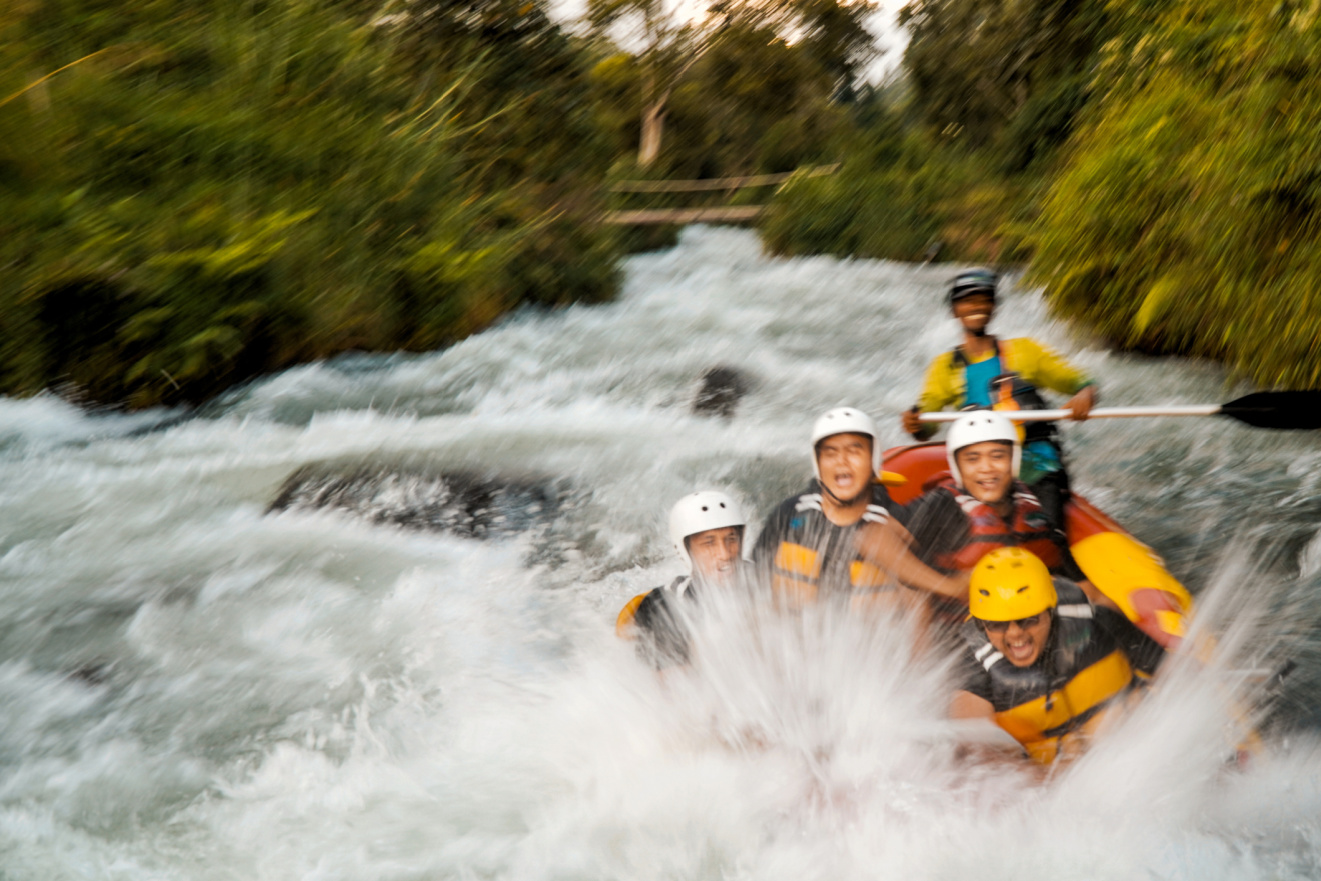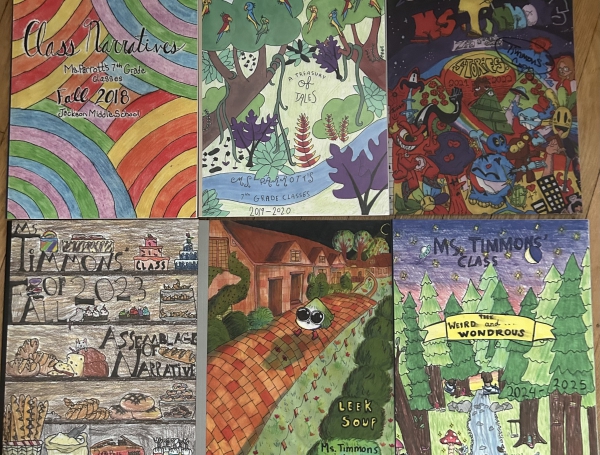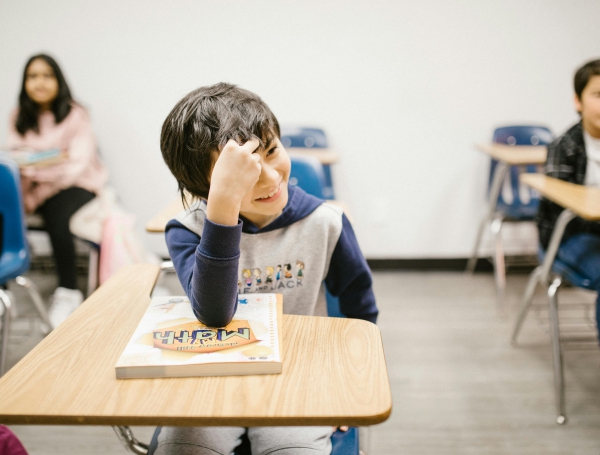

Whitewater Rafting the Deschutes River
January 25, 2023
I feel that I have had the support and opportunity to do some pretty incredible things in my 20-year teaching career. I started a fishing club and taught a Recreational Physical Education class that took students razor-clam digging/biking/rock climbing/surfing/etc. I've been on the coaching staff of state championship teams, started an archery program, worked as a mentor teacher, and the list continues. However, if I had to pick one program I have been involved in that truly touched students' lives and positively impacted everyone who participated, it would be our whitewater rafting trips on the Deschutes River.
For 13 years, I worked for a principal named Larry Lockett. Larry is now retired but worked all over Oregon and wore many different education hats. When he came to Astoria High School, he had been running whitewater rafting trips with Stayton High School, a company called Bluefish Adventures (once owned by Larry and Ed Bartlett), and Western Oregon University. Larry convinced the school board and the superintendent that Astoria High School should start running these trips. He began by taking the high school leadership class, and it evolved from there.
I became heavily involved in the trips and eventually was the adult organizing, coordinating, and running the trips. For the last four years, we ran trips and took between 100-130 of our students each spring, approximately 20 percent of our student body. When it started, students had to pay $125 or work 10 hours in the community. By the time I finished with it, the cost was $40, and students who could not afford it received a scholarship (the experience was so powerful that the community got behind the program, and I had businesses that donated each year to whittle the cost down).
Here are the basic parameters of the trip. Students had to attend three meetings before the trip. At these meetings, students were given a lesson on Native American history in the area and what it is like to live in a synergistic society. We covered logistics and safety, and we answered questions that students had. I have yet to mention that these are co-ed, overnight tent camping trips. Each trip had a maximum of 28 students, and we camped at Maupin City Park.
Students leave the school at 6 am and arrive at the river at about 10 am. They raft until lunch, set up camp, and then raft until dinner. The stretch of the river includes class 3 and 4 rapids, and most of the students had never rafted whitewater before. One of the key elements of this trip is that Mother Nature is the great equalizer. She does not care what you look like if you are strong, or who your friends are. She washes off the "look good," and every one is created equally when you are navigating her whitewater challenges. I have had students on the river in the snow, in 100+ weather, at camp in an unbelievable thunderstorm, on the river at flood stage, etc. You never know what curveballs are coming your way. And that adds to the allure of the experience.
That being said, students are placed in rafts randomly, and often they are in a raft with one adult and a group of students that they do not know too well. They soon learn that they must work together to successfully make it down the river, as the raft does not maneuver itself. The guides are staff members or adults that know the program. They teach history along the way, ask probing questions for discussion, play different river games, instigate water fights with other boats, etc. What the guides are doing, unbeknownst to the kids, is creating trust, safety, and a sense of community. At the end of the rafting part of day one, we all work together to create a hearty meal and get everything cleaned up. And then we go to a special place called Beavertail. It is here where the magic starts. We have 25+ kids, usually around six adults, and we load up two minibuses and a van and drive down the canyon for about 45 minutes into the middle of nowhere. It is at Beavertail where we unload and take the kids on a short trek up the hill. We sit down on a tarp, and as the sun is setting, we are high above the river overlooking it. The only sign of humans is the dirt road we came in on and the train tracks/light on the other side of the river. It is at this moment when the students are taught a lesson about the Native American tribes that used to nomadically roam the very countryside where we were sitting at different times of the year. And they lived off the land. They may be harvesting salmon, deer, or whatever they need to survive. They lived in Teepees, and everyone had a role that needed to be fulfilled in their society so the tribe would survive. It is similar to what the students experienced for the last 14 hours. The lesson also covers the importance of communication within the group, and how coupled with trust and feeling safe, the tribe would sit down at times and have a talking circle to check in with each other.
At this point, we get the students up and talk about our spirit stick. The stick is a symbol of our "tribe" and is kept in the principal's office. We start walking and the stick starts in the front of the group and is passed from person to person. No one is allowed to talk, and when you get the stick, you are asked to put some love into the stick by silently thanking those who gave you an opportunity to come on the trip. Once everyone has had the stick the group circles up and sits down. At this point, it is dark enough that you cannot see across the circle. The leader sets the parameters of the activity. The stick gets passed from person to person. No one can talk but the person with the stick. If you do not want to talk, you can pass. When it is your turn, you can talk about anything you want for as long as you want. You may not talk across the circle (comment on things said by others); rather, you speak your own truth whatever that may be. Once the stick goes all the way around, those who passed may speak if they choose. The activity typically takes several hours and ends with a lot of hugs, smiles, laughs, and tears. It is often midnight or later when we return to camp.
You cannot believe the things that I have heard over the years at Beavertail. Both students and adults have shared things that were incredibly powerful and gut-wrenching. I can honestly say that I have never been there with a group and not cried at some point. But here is the cool thing. That experience can never be recreated and is unique to the group sitting on that hillside that night. The final instruction at the end is that the person who shared is the only person who can share their story. So, what happens on Beavertail, stays on Beavertail. I HAVE NEVER, EVER heard of a student sharing a story that was not theirs when we got back to our normal daily lives.
The next morning we make breakfast, and the students get to raft some more before they get on a bus at about 11 am and head back to Astoria. They usually get back around 5 pm. They are exhausted but rejuvenated. And it is so fun to see the change in the culture and climate of the school. You see kids eating lunch together that didn't know each other before, you see kids saying high to each other as they pass in the hallway even if they are not in the same social group, and you see a level of respect and rapport that did not exist prior to the trip. Every single year I have alumni contact me about the trips and thank me for putting them on because it was the best activity in their high school career.
And that is why running these trips has been the most rewarding/impactful/powerful thing in my career as an educator.
This guest article was written by Gordon Thomson while taking the online continuing education course Boys In Trouble: Turnaround Strategies for Educators by THI instructor Lori Gibson.




